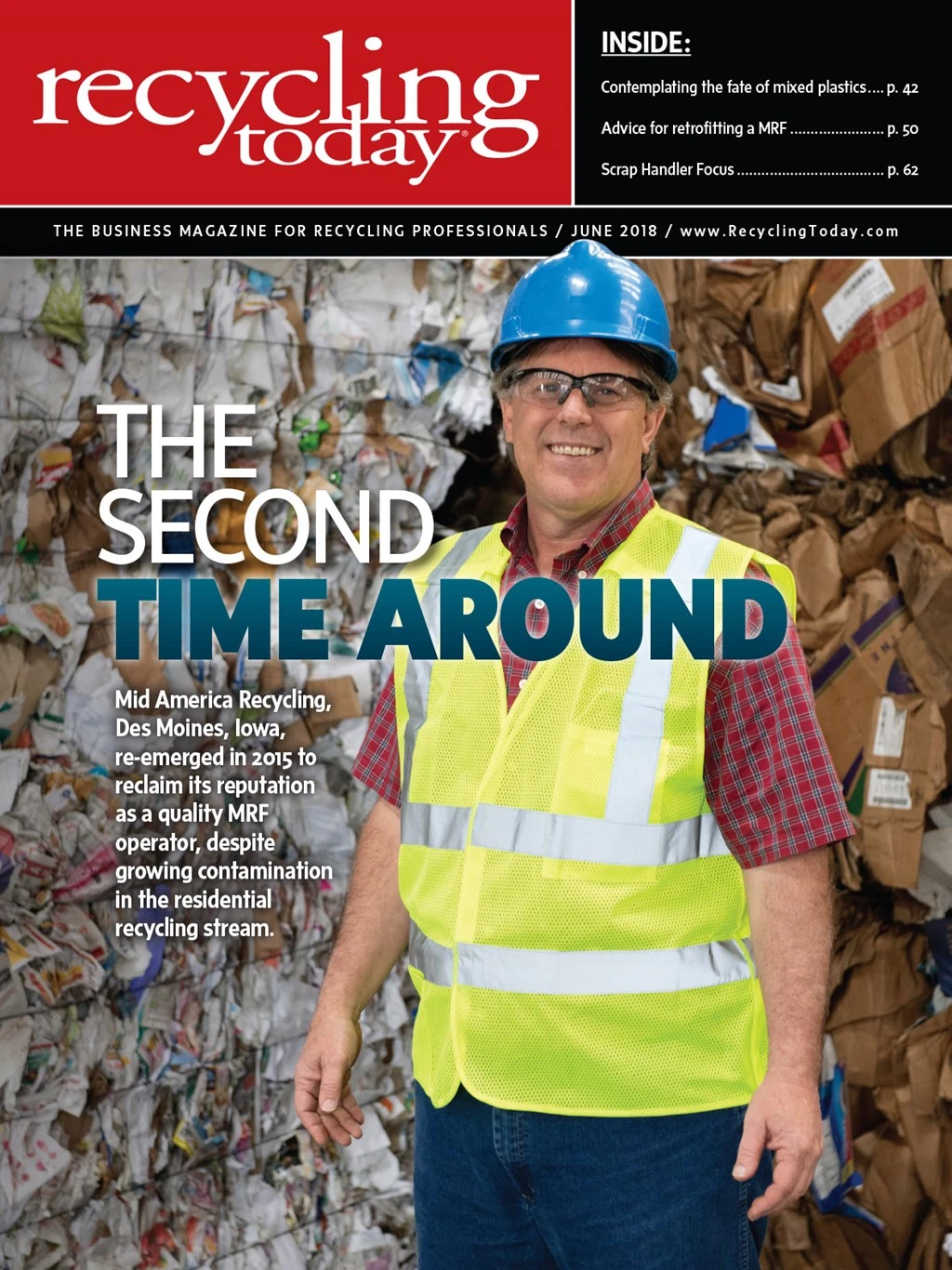Prime scrap, as measured by the American Metal Market (AMM) No. 1 busheling grade, was the only one to fully maintain its value in the domestic market in the early May buying period, apparently reflecting ongoing demand for such scrap from electric arc furnace (EAF) mills.
A recycler in the Midwest indicates mill buyers also may be convinced that considerable supplies of shredded scrap and No. 1 heavy melting scrap (HMS) have been built up after good scale pricing for several months in a row.
If that is the case, the same mill buyers may be likely to lower their bids and even bide their time for 30 days to wait for sellers to let

Also working against the strength of HMS and shred pricing was a reported lack of interest from overseas buyers in April and early May. Mike Marley of World Steel Exchange Marketing (WSEM), Englewood Cliffs, New Jersey, reports in May that some East Coast exporters were selling shred and No. 1 HMS to Midwest mills because of a lack of orders from overseas.
In mid-May, however, Marley reports that circumstance could be changing, writing, “Export prices and demand showed some new sparks of life [the week of May 7-11] when U.S. exporters booked orders for two bulk cargoes to the Turkish steel mills.”
He adds that the HMS East Coast export price rose to $359 per metric ton delivered to a Turkish port based on that activity, rising by $3 per metric ton from a week earlier.
Heading into June, however, prime grades in the domestic market were maintaining a margin of $20 per ton over shredded scrap and $47 per ton over No. 1 HMS, providing some credence to their reputation as “prime” material.
“The economy and the nonresidential construction marketplace are presently strong. The next two years are shaping up to be solid ones for nonresidential construction firms.” – Anirban Basu, Associated Builders and Contractors
The wider U.S. economy is moving forward in a slow but steady growth mode, maintaining a streak that has continued since the recovery from the financial crisis began in late 2009.
The domestic steel industry, as measured by data collected by the Washington-based American Iron and Steel Institute (AISI), is reflecting similar slow growth. Year to date through May 12, 2018, domestic mill output has risen by 1.7 percent compared with the same time frame in 2017.

Output year to date in 2018 of 33.2 million tons has been achieved at a mill capacity rate of 75.5 percent. That capacity figure also is an improvement from the same time frame in 2017, when the rate was 74.3 percent.
Momentum may be sputtering, however, with AISI reporting that in the week ending May 12, 2018, nearly 1.75 million tons of steel were produced at a mill capacity rate of 74.5 percent. Production during that week declined by 1.8 percent from the previous week, when output was 1.78 million tons and the capacity rate was 75.9 percent.
A construction industry trade group is raising the question of whether current and proposed tariffs on imported steel are causing hiccups in the building sector, thus creating the unintended (but oft-predicted) consequence of hurting all steelmakers and the wider U.S. economy.
The Washington-based Associated Builders and Contractors (ABC) in a May 2018 press release says, “Prices for inputs to construction materials expanded 1.3 percent in April 2018” and “are 6.4 percent higher than at the same time one year ago.” The group cites U.S. Bureau of Labor Statistics data as its source.
“Arguably, a number of policies are contributing to these burgeoning inflationary pressures,” says ABC Chief Economist Anirban Basu. “Shifting immigration policies are one factor, as are proposed tariffs, including on steel and aluminum. During the past year, iron and steel prices are up nearly 11 percent,” he continues.
Despite his concerns, Basu says, “The economy and the nonresidential construction marketplace are presently strong. … The next two years are shaping up to be solid ones for nonresidential construction firms.”
Sponsored Content
Labor that Works
With 25 years of experience, Leadpoint delivers cost-effective workforce solutions tailored to your needs. We handle the recruiting, hiring, training, and onboarding to deliver stable, productive, and safety-focused teams. Our commitment to safety and quality ensures peace of mind with a reliable workforce that helps you achieve your goals.
That scenario should spell good news for steelmakers and scrap processors alike. But longer term, the impact of inflation could be worrisome, Basu says. “Rising inflationary pressures are beginning to translate into higher borrowing costs. The cost of delivering construction services is also on the rise. At some point, this combination of factors will impede further progress and may ultimately contribute to the end of the current expansion cycle.”
Another worrisome sign for the steel and ferrous scrap sectors involves U.S. auto sales, which declined in April 2018. Data gathered by J.D. Power and LMC Automotive points to a passenger car and light truck sales decline of nearly 8 percent compared with April 2017.
According to Reuters’ summary of the data, “The seasonally adjusted annualized rate of sales for April will be 16.6 million vehicles, down more than 2 percent” from the 17 million vehicles sold in 2017.
Get curated news on YOUR industry.
Enter your email to receive our newsletters.

Explore the June 2018 Issue
Check out more from this issue and find your next story to read.
Latest from Recycling Today
- Steel Dynamics cites favorable conditions in Q1
- Hydro starts up construction in Spain
- Green Cubes unveils forklift battery line
- Rebar association points to trade turmoil
- LumiCup offers single-use plastic alternative
- European project yields recycled-content ABS
- ICM to host colocated events in Shanghai
- Astera runs into NIMBY concerns in Colorado







